Building the Teaching Marsh
A tidal marsh is a wetland found along rivers, coasts and estuaries which floods and drains by the tidal movement of the adjacent estuary, sea or ocean.
Before planting a tidal marsh, it is important to know: 1) the local salinity range to pick the right plants, and 2) the local tide levels to know where they should be planted in the new marsh.
If the correct elevations are accurately targeted, then the planted vegetation will quickly fill in until it looks just like a natural marsh. If introduced marsh plants fail to thrive, then the tide levels should be re-evaluated.
The VIMS Teaching Marsh was excavated and planted in the fall of 1999. Gravel paths and a footbridge guide visitors through the project. Informational posters are set up at viewing stations. Plant labels assist with identification of many species.
Teaching Marsh in 1999 - Newly created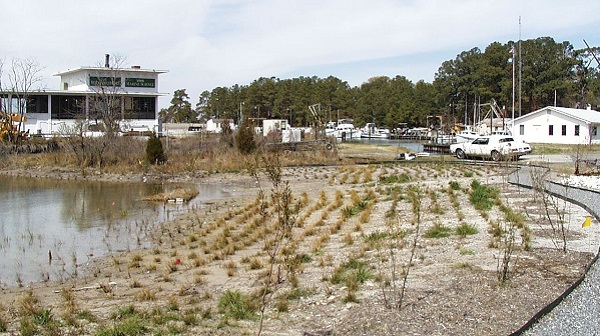
Teaching Marsh in 2000 - After the first growing season
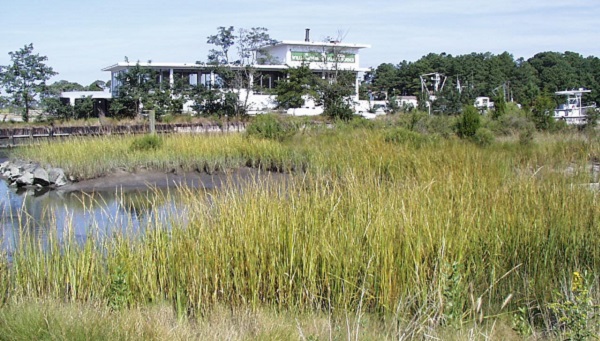
Teaching Marsh in 2007 - Oyster reef construction
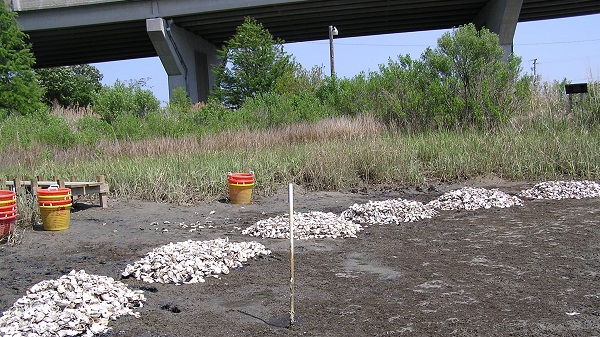
A small oyster reef was added in 2007 using oyster shells recycled from local restaurants with help from the Chesapeake Bay Foundation. New shells, young oysters, and mature adult oysters are periodically added to this reef to help maintain living reef habitat.
Teaching Marsh in 2019 - After 20 years
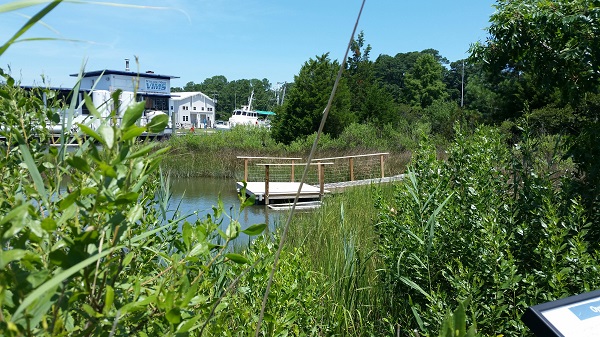
Coastal resilience adaptations were added in 2019 in response to more frequent rainfall, tidal flooding and sea-level rise. These improvements include a floating pier, a floating shed, and a living roof on the shelter.
Teaching Marsh in 2020 - Renamed in honor of Emeritus Professor Carl Hershner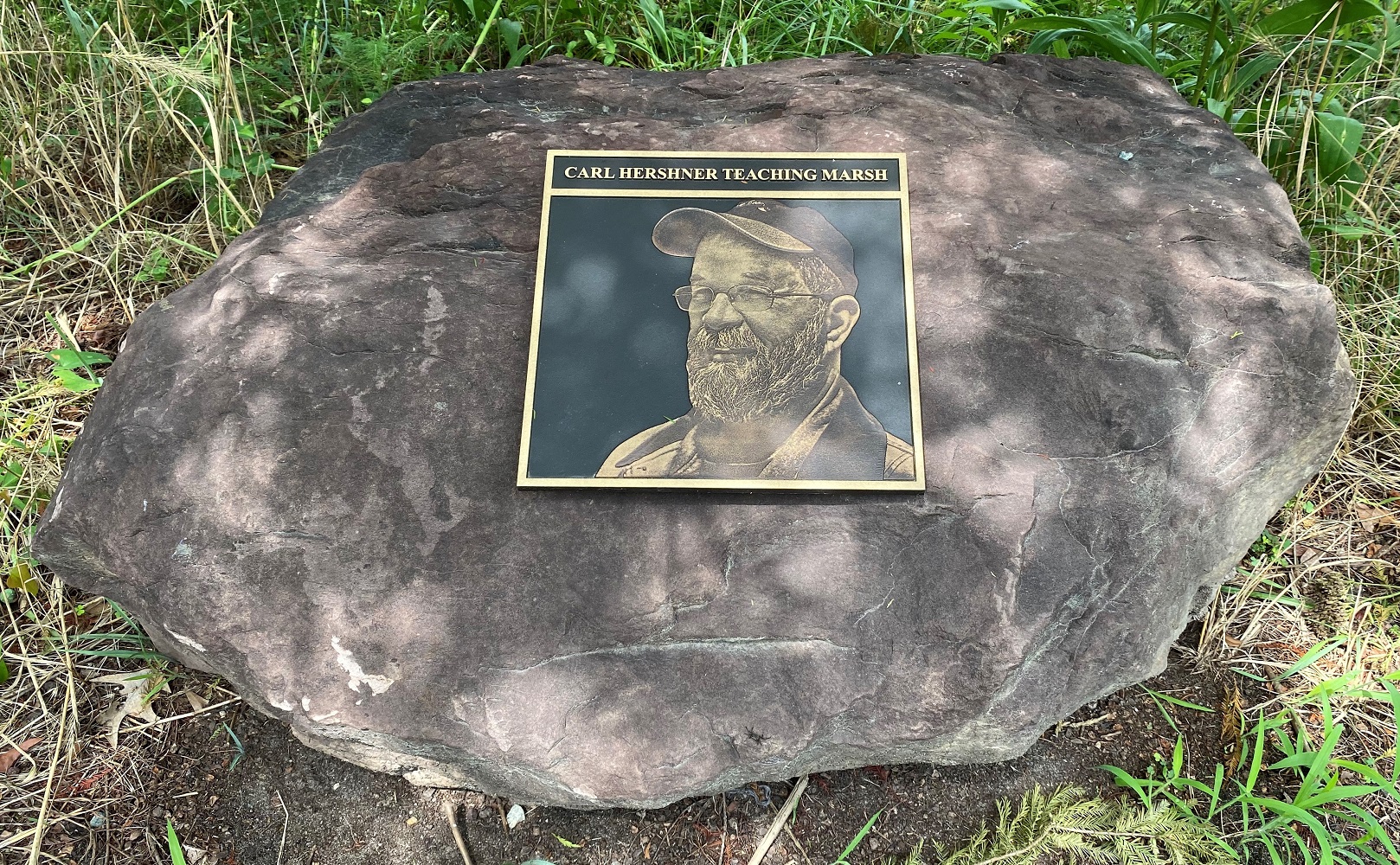
The Center's Director, Carl Hershner officially retired on April 1, 2020 after nearly fifty years of dedicated service to VIMS. Carl was a student at VIMS before he began working here as a shoreline advisor, next he joined the VIMS faculty and then launched what is now called the Center for Coastal Resources Management. He leaves behind a long list of graduate students, field studies, research programs, committees, courses, clinics and advisory service contributions not just in Virginia, but around the world. Due to Carl's efforts, thousands of visitors have enjoyed, learned, and very much appreciated that this teaching marsh is here for all. To honor Emeritus Professor Carl Hershner for all the contributions that he has made to VIMS and the Commonwealth, VIMS has named the on campus teaching marsh the Carl Hershner Teaching Marsh. So that it may continue to be enjoyed by visitors and students into the future, donations can be made through the VIMS Foundation.
